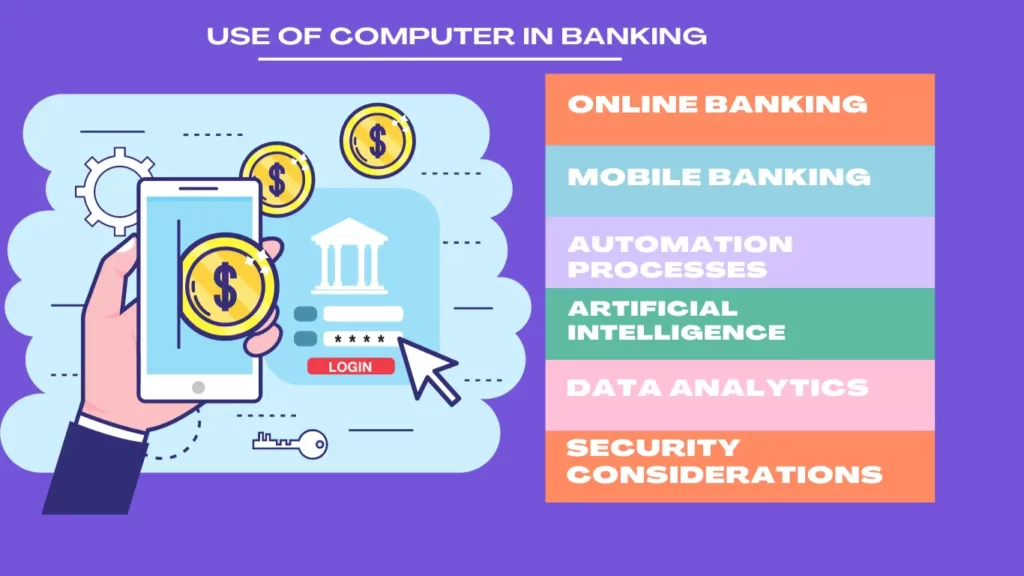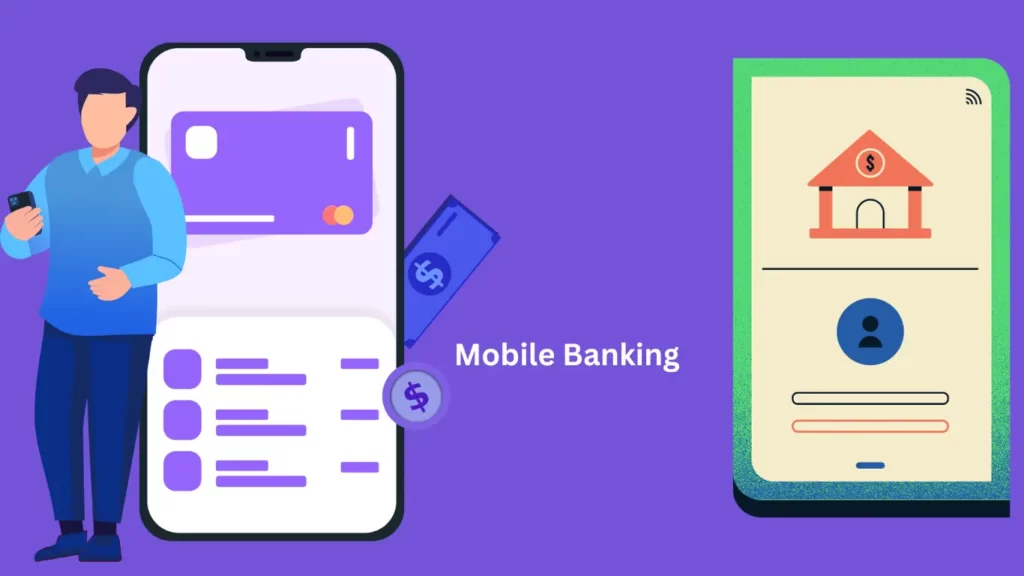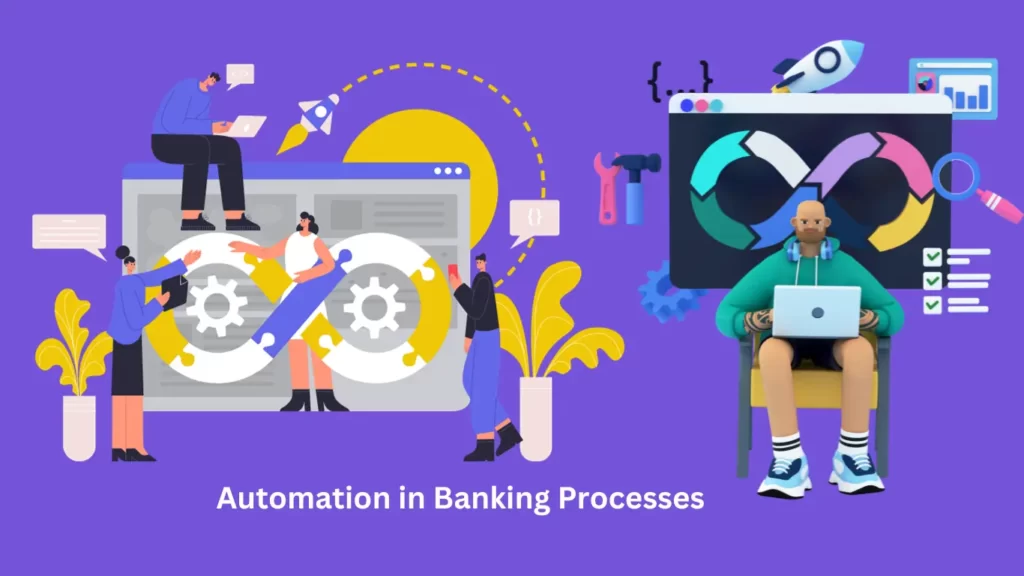Use of Computer in Banking : In this digital age, the banking sector has undergone a significant transformation with the advent of computers. The use of computer in bankingsector have revolutionized the way financial institutions operate, bringing convenience, efficiency, and security to customers.

In this article, we will delve into the various aspects of use of computer in banking, including security considerations, data analytics, artificial intelligence, mobile banking, online banking, and automation.
TOP 6 Use of Computer in Banking | Applications of Computer in Banking
1. Security Considerations
With the digitization of banking processes, the risk of cyber threats and data breaches has become more prevalent. However, banks have implemented robust security measures to protect sensitive data and prevent unauthorized access.
Despite these measures, customers also play a crucial role in ensuring their own security by adopting best practices such as using strong passwords, regularly updating their software, and being cautious while sharing personal information online.
2. Data Analytics
The vast amount of data generated by banking transactions is a treasure trove of insights that can be harnessed for strategic decision-making. By leveraging sophisticated algorithms and analytical tools, banks can analyze customer behavior, identify trends, and make informed business decisions.
Data analytics can assist banks in risk management by predicting creditworthiness, assessing loan default risks, and optimizing investment portfolios. Overall, data analytics has become a vital tool for banks to gain a competitive edge and enhance their decision-making processes.
For example, data analytics can help banks identify potential fraud by detecting unusual patterns in transactions or flagging suspicious activities.
3. Artificial Intelligence
Artificial intelligence (AI) is revolutionizing the banking industry by automating various processes and enabling personalized interactions with customers. Chatbots and virtual assistants are prime examples of AI applications in banking. These intelligent systems can answer customer queries, provide product recommendations, and even assist in financial planning.
AI algorithms can analyze customer data to identify patterns and offer tailored financial advice. This level of personalization enhances the customer experience and builds trust. AI is also being used in fraud detection by continuously monitoring transactions for suspicious activities and flagging potential threats. By leveraging AI, banks can streamline their operations, reduce costs, and provide superior customer service.
4. Mobile Banking
A Mobile banking applications allow users to perform various banking transactions and access account information anytime, anywhere. The convenience and accessibility offered by mobile banking have transformed the way customers interact with their banks. From transferring funds to paying bills, mobile banking provides a seamless and efficient banking experience.

Moreover, mobile banking has opened up new opportunities for financial inclusion, especially in developing countries where access to traditional banking services may be limited. Mobile banking allows individuals who were previously unbanked to access financial services, empowering them to save, invest, and participate in the formal economy.
5. Online Banking
Online banking platforms enable customers to perform a wide range of transactions, from checking account balances to applying for loans, all through a secure internet connection. The advantages of online banking are manifold.
Firstly, online banking provides 24/7 access to accounts, eliminating the need to visit physical branches during banking hours. This convenience is especially beneficial for busy individuals who may not have the time to visit a bank during regular business hours. Additionally, online banking allows customers to monitor their transactions in real-time, providing greater control over their finances.
Online banking also promotes sustainability by reducing the need for paper-based transactions, contributing to a greener environment. Overall, online banking has transformed the way customers manage their finances, offering convenience, cost savings, and environmental benefits.
6. Automation in Banking Processes
Automation has played a pivotal role in streamlining banking processes, reducing manual errors, and improving operational efficiency. From account opening to loan processing, automation has optimized various aspects of banking operations. For instance, customer onboarding can now be done digitally, eliminating the need for physical paperwork and expediting the process. This not only saves time for customers but also reduces costs for banks.

Moreover, automation has enabled faster and more accurate loan processing. By automating credit scoring and risk assessment, banks can make quicker lending decisions, enhancing customer satisfaction and reducing the time-consuming paperwork associated with loan applications.
Conclusion : Use of Computer in Banking
In conclusion, the applications of computers in the modern banking sector have revolutionized the industry, bringing convenience, efficiency, and security to both customers and financial institutions. From the enhanced security measures to data analytics, artificial intelligence, mobile banking, online banking, and automation, technology has transformed the way we bank.
As we embrace these advancements, it is crucial to strike a balance between innovation and security to ensure a robust and customer-centric banking experience in the digital era.
